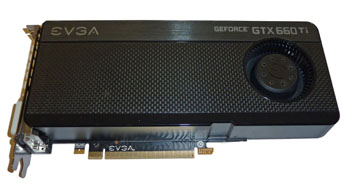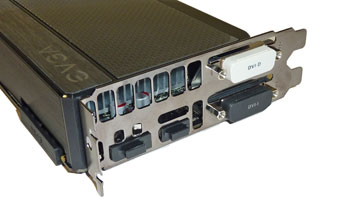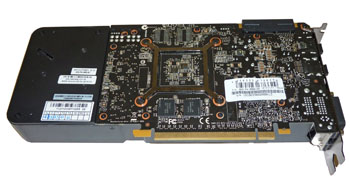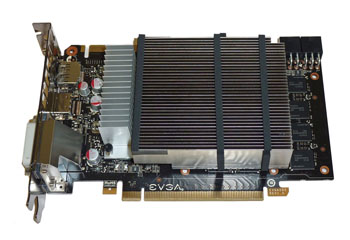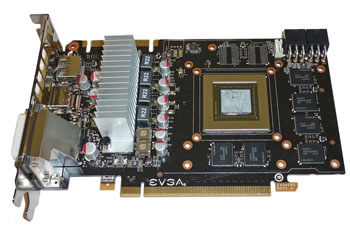Introduction
NVIDIA's release of the GeForce GTX 660 Ti graphics card is good news for gamers. The card shares many similarities with the range-topping GTX 680 and GTX 670 GPUs but arrives with a street price of around £250, or £40 less than the cheapest GTX 670s. You can learn all about what makes it tick in this article, but for those that can't be bothered, and we can't entirely blame you, this new GPU has the same core/shader composition as the GTX 670 but sacrifices memory bandwidth and fillrate potential at the altar of lower cost.
Arch-rival AMD, meanwhile, has unleashed a tasty combo of price cuts and performance-enhancing drivers in recent weeks, so much so that Radeons' overall proposition is looking mighty attractive. GeForce GTX 660 Ti needs to succeed, and succeed well, if it's to continue the good work laid down by the two aforementioned 600-series cards.
EVGA today launches two GeForce GTX 660 Ti 2GB cards - the 'Standard' and 'SuperClocked'. Both variants use reference-like cooling, and we have the £260 SuperClocked in for review. It increases the core speed from 915MHz to 980MHz - GPU Boosting to 1,059MHz - but leaves memory untouched, running at an effective 6,008MHz. The overclock can be considered as average in the grand GTX 660 Ti scheme.
Measuring 9.75in and presented in a dual-slot form factor, NVIDIA's reference design calls for two six-pin PCIe plugs to be located near the centre of the card, which is where the PCB actually ends. The radial fan takes up the entire left-hand section, as viewed on the second picture. We're adamant that, if partners wanted, even-smaller GTX 660 Ti cards could be created.
Cooling design is such that most of the hot air is exhausted out of the back. Video outputs match NVIDIA's two dual-link DVI, HDMI and DisplayPort. Notice how short the PCB is? Two Hynix 6Gbps-rated GDDR5 memory modules are placed on the rear, with the remainder on the GPU side.
Opt for a peep show and the diminutive PCB stares back at you. Just 6.75in long and equipped with two heatsinks - one for the VRMs and one for the core - there's really not too much going on here. The radial fan blows air over the central heatsink and concurrently keeps the memory modules cool.
Slip off the cooler and the 294mm² Kepler die is surrounded by a further six Hynix GDDR5 memory chips. Partners have a choice of using either a 2GB or 3GB framebuffer for GTX 660 Tis. Keeping costs down and launching at close to the price of a completely generic card, EVGA uses a total of eight 2Gbit devices, with four operating in x16 mode and the remaining quartet in the regular x32, thus filling the 192-bit-wide memory controller.
We hazard that NVIDIA and its partners are making decent margins on these high-end 600-series GPUs. That trend should continue with the GTX 660 Ti 2GB, which is simply a cutdown version of GTX 670/680. EVGA's card, coming in at £260, is a good example of how to make the reference design that little bit better with a dose of core overclocking.
The package includes a DVI-to-VGA adapter, two six-pin-to-Molex power plugs, the firm's PrecisionX software, and a reasonable instruction booklet. Backed up by a three-year warranty, which is tied to the card and not to the original purchaser, support appears to be above average.






